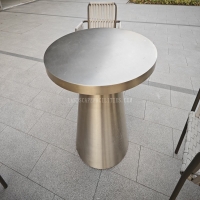Welcome to the website for landscape facilities products and knowledge.
What are the key considerations for designing landscape tables for permafrost regions?
Designing landscape tables for permafrost regions requires careful planning to address unique challenges posed by frozen ground. The primary consideration is thermal stability, as heat from structures can thaw permafrost, leading to subsidence and structural failure. Insulating materials like geofoam or gravel layers help minimize heat transfer.
Frost heave prevention is another critical factor. Seasonal freezing and thawing cycles cause ground movement, which can damage structures. Using adjustable foundations or elevated designs allows for natural ground movement without compromising stability.
Drainage systems must be carefully designed to prevent water accumulation, which accelerates permafrost degradation. Sloped surfaces and permeable materials facilitate proper runoff.
Material selection is crucial—opt for lightweight, durable, and thermally inert materials that withstand extreme temperature fluctuations. Aluminum composites and treated woods are often preferred.
Lastly, sustainable practices should be prioritized. Minimizing site disturbance preserves the insulating vegetation layer, while modular designs allow for easier repairs and adjustments as permafrost conditions evolve over time.
By integrating these considerations, landscape tables in permafrost regions can achieve both functionality and long-term resilience.
Related search:

Recommendation
Outdoor Metal Table - Classic Outdoor Furniture, Stainless Steel Table, Durable and Reliable